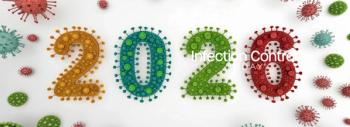
Novel Compound Found Effective Against Avian Influenza Virus
A novel compound is highly effective against the pathogenic H5N1 avian influenza virus, including some drug-resistant strains, according to new research led by a University of Wisconsin-Madison virologist.
The work, published in the Public Library of Science journal PLoS Pathogens on Feb. 26, suggests that the compound CS-8958 is a promising alternative antiviral for prevention and treatment of bird flu.
Antiviral drugs are a primary countermeasure against human influenza viruses, including the highly pathogenic H5N1 avian influenza virus, which causes bird flu. Emerging strains resistant to existing drugs, particularly oseltamivir (Tamiflu), pose a threat and make the development of alternate antivirals a pressing public health issue, says Yoshihiro Kawaoka, a professor of pathobiological sciences at the UW-Madison School of Veterinary Medicine and senior author of the new study.
Kawaoka and a group of researchers from Japan, Vietnam, and Indonesia tested a novel neuraminidase inhibitor R-125489 and its prodrug CS-8958, which had previously shown potent activity against seasonal influenza viruses in laboratory animals.
Working with mice, the researchers found that a single intranasal dose of CS-8958 given two hours after infection with H5N1 influenza virus resulted in a higher survival rate and lower virus levels than a standard five-day course of oseltamivir. CS-8958 was also effective against highly pathogenic and oseltamivir-resistant strains of H5N1 virus.
In addition to its therapeutic use, CS-8958 also protected mice against lethal H5N1 infection when given seven days before infection with the virus.
“This compound requires only a single administration for both treatment and prophylaxis. Such prophylaxis would be highly desirable for seasonal influenza as well as a potential pandemic situation,” says Kawaoka.
Although follow-up studies will be needed to confirm the applicability of the findings to humans, “CS-8958 is highly effective for the treatment and prophylaxis of infection with H5N1 influenza viruses, including oseltamivir-resistant mutants,” the authors conclude.
Newsletter
Stay prepared and protected with Infection Control Today's newsletter, delivering essential updates, best practices, and expert insights for infection preventionists.






